|
USDA Forest Service Eastern Region. State Forest Action Plans. . USDA Forest Service Eastern RegionState Forest Action PlansEvery ten years, each state and the District of Columbia create plans that provide a snapshot of current forest conditions and outline priorities and strategies.Learn moreCharles Show
Top 1: Region 9 - Home - US Forest ServiceAutora: fs.usda.gov - 62 Avaliação
Descrição: USDA Forest Service Eastern Region. State Forest Action Plans USDA Forest Service Eastern RegionState Forest Action PlansEvery ten years, each state and the District of Columbia create plans that provide a snapshot of current forest conditions and outline priorities and strategies.Learn moreCharles
Resultados de pesquisa correspondentes: WebForest Service grants support youth employment in Great Lakes watershed. Using grants provided through the USDA Forest Service Eastern Region, the Superior Watershed Partnership is reducing stormwater runoff, filtering pollution entering the Great Lakes and restoring habitats — all while providing career-building experiences for a future … ...
Top 2: Our Pictorial Guide to Diagnosing Tree Diseases - Better Homes & GardensAutora: bhg.com - 151 Avaliação
Descrição: Get to work diagnosing tree diseases with our pictorial summary of 10 common tree diseases. Comprehensive details about visible damage as well as control measures accompany each image to help you get a handle on what is troubling your tree. Leaf Rust Scott Little You're dealing with leaf rust wh
Resultados de pesquisa correspondentes: WebJun 3, 2022 · Ornamental cherry trees are especially vulnerable to leaf spot tree disease. Damage: Infected leaves develop spots, turn yellow or brown and drop off the tree. Control: Shake infected leaves from the tree onto a disposable sheet or tarp and destroy them to prevent further infection. Prune the tree to encourage better air circulation and mulch ... ...
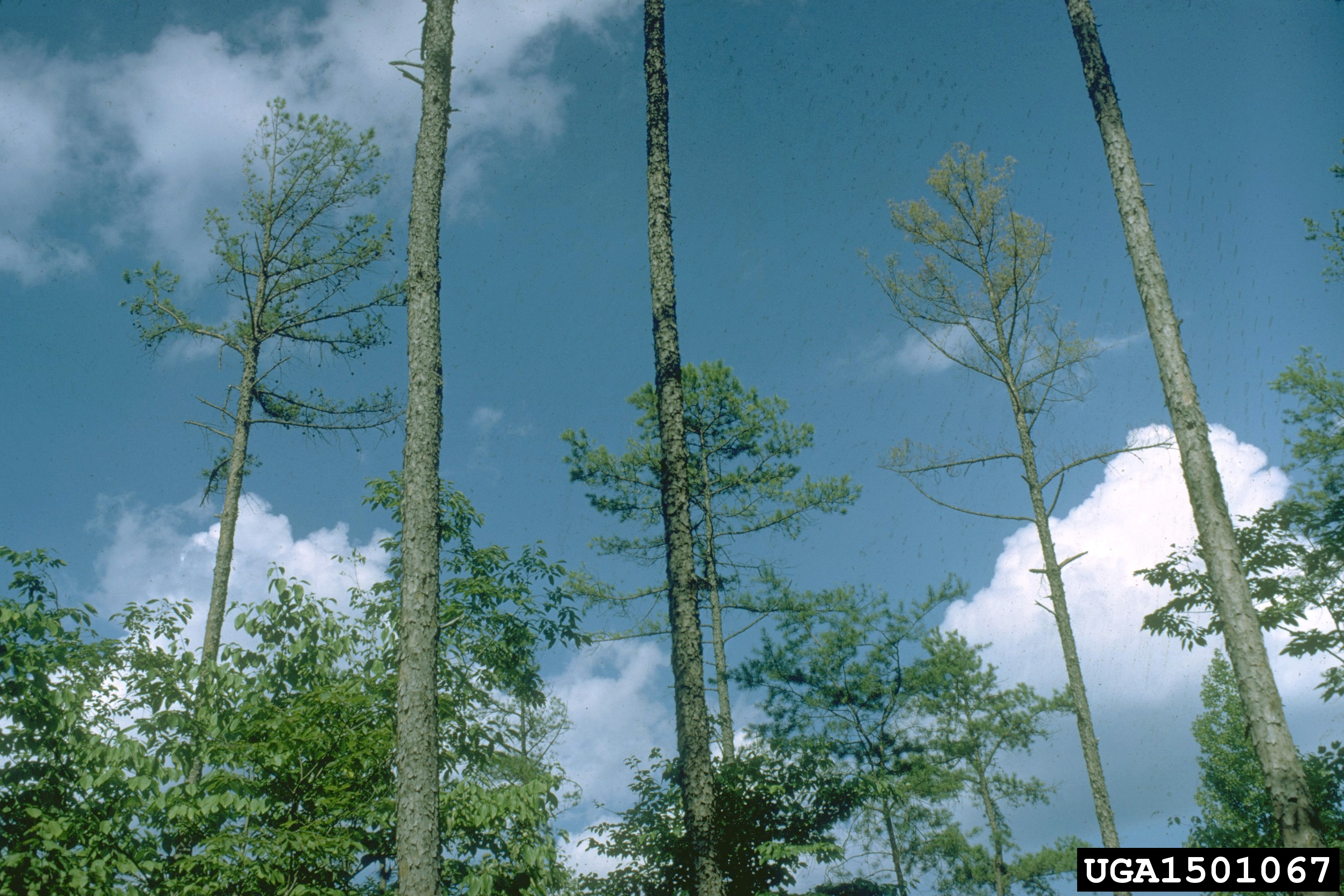 Top 3: Common Tree Disease Problems | Symptoms and photos of tree …Autora: uaex.uada.edu - 144 Avaliação
Descrição: What causes stress in trees?. Hardwood Stem Diseases. Loblolly Pine Decline. Forestry Disease. Publications. Hardwood Rood Diseases Stress places trees at a greater risk for diseases. This tree is infected with littleleaf disease. Photo courtesy of Daniel H. Brown, USDA. Forest Service, B
Resultados de pesquisa correspondentes: WebStress places trees at a greater risk for diseases. This tree is infected with littleleaf disease. Photo courtesy of Daniel H. Brown, USDA Forest Service, Bugwood.org ... Black Knot of Cherry and Plum, ... provides more information about root rots. This publication, Shoestring Root Rot - A Cause of Tree and Shrub Decline, ... ...
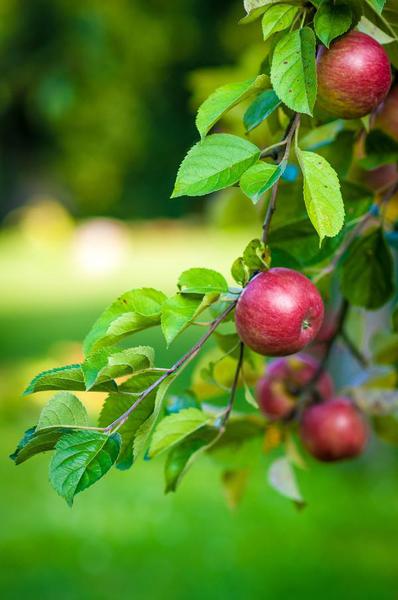 Top 4: 15. Tree Fruit and Nuts | NC State Extension PublicationsAutora: content.ces.ncsu.edu - 136 Avaliação
Descrição: Other Publications in North Carolina Extension Gardener Handbook. Regional Considerations Pruning Fruiting Wood. 1. Monitor and scout to determine pest type and population levels.. 2. Accurately identify host and pest.. 3. Consider economic or aesthetic injury thresholds. A threshold is the point at which action should be taken.. 4. Implement a treatment strategy using physical, cultural, biological, or chemical management, or a combination of these methods.. 5. Evaluate success of treatments.. More NC State Resources. Eastern North Carolina. Central North Carolina. Western North Carolina. Soil Type and Drainage. *Note: This table was prepared by John Vining. Rootstock Selection and Spacing. Types of Pruning Cuts. General Pruning Guidelines. Dormant and Summer Pruning. Central Leader Training—Apple, Pear,. Pecan, Plum. Initial Steps in Pruning a Tree to a Central Leader:. Example of a Modified Leader: Pecan Trees. Modified Central Leader Training. Multileader System—Pear. Open-Centered or Vase. System—Peach, Nectarine, Plum. First-Year Summer Pruning. To minimize pest problems:. If spraying is warranted:. Common Pecan Tree Insect Problems. First-Year Summer Pruning. Mature Central Leader Trees. Neglected Central Leader Trees.
Resultados de pesquisa correspondentes: Web2 days ago · Fruit Recommended Cultivars Pollination Notes Disease Notes Other Considerations; Apples. Malus domestica (Figure 15–1). Gala, Ginger Gold, Jonagold, Empire, Red Delicious, Golden Delicious, Crispin (Mutsu), Stayman, Rome, Fuji: Requirements vary. Some cultivars are self-fruitful.Others require a pollinator. a Summer … ...
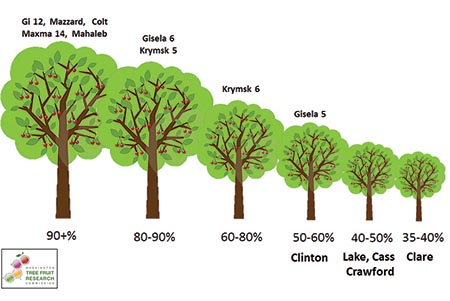 Top 5: Rootstocks for Cherry | WSU Tree Fruit | Washington State …Autora: treefruit.wsu.edu - 116 Avaliação
Descrição: View Print VersionAll commercial cherry trees are made up of two parts: the upper fruiting portion (grafted or budded scion wood); and the lower portion ( the rootstock). Until fairly recently, the majority of breeding efforts were directed towards fruit improvement. Over the past century, breedin
Resultados de pesquisa correspondentes: WebA semi-dwarf rootstock that produces a tree slightly smaller than Mazzard, roughly 80 to 90 percent. A good substitute for Mazzard, Gisela® 6 is well suited for heavy soil types. The tree structure is very open and round. Very precocious despite its vigor. It appears tolerant to many cherry viruses and is not prone to suckering. ...
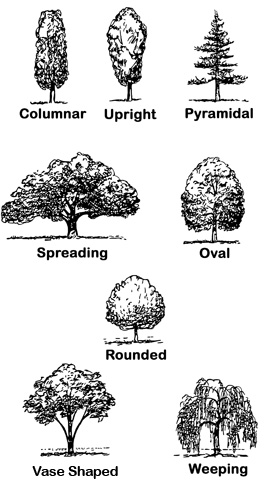 Top 6: Native Plants for Georgia Part I: Trees, Shrubs and Woody VinesAutora: extension.uga.edu - 125 Avaliação
Descrição: Plant Ecology of Georgia. Establishing Native Plants in the Landscape. Guide to Plant Descriptions. Medium and Large Trees. What Are Native Plants?. Why Plant Native Plants?. Design Considerations. Site Evaluation and Plant Selection. Site Preparation and Establishment. Common Name(s)/Botanical Name/Family:. Red Maple / Acer rubrum Family: Maple / Aceraceae. Sugar Maple / Acer. saccharumFamily: Maple / Aceraceae. Yellow Buckeye / Aesculus flavaFamily: Buckeye / Hippocastanaceae. River Birch / Betula nigraFamily: Birch / Betulaceae. Hickory SpeciesFamily: Walnut / Juglandaceae. Sugarberry / Celtis laevigataFamily: Elm / Ulmaceae. American Yellowwood / Cladrastis kentukea (Syn.. Cladrastis lutea)Family: Pea / Fabaceae. American Beech / Fagus grandifoliaFamily: Beech / Fagaceae. White Ash / Fraxinus americanaFamily: Olive /. Oleaceae. Green Ash / Fraxinus pennsylvanicaFamily: Olive /. Oleaceae. American Holly / Ilex opacaFamily: Holly / Aquifoliaceae. Black Walnut / Juglans nigraFamily: Walnut. / Juglandaceae. Eastern Red Cedar / Juniperus virginianaFamily: Juniper / Cupressaceae. Sweetgum /. Liquidambar styracifluaFamily: Witchhazel / Hamamelidaceae. Tulip Poplar or Yellow Poplar / Liriodendron. tulipiferaFamily: Magnolia / Magnoliaceae. Southern Magnolia / Magnolia grandifloraFamily: Magnolia / Magnoliaceae. Black Gum or Tupelo / Nyssa. sylvaticaFamily: Nyssa / Nyssaceae. Shortleaf Pine /. Pinus echinataFamily: Pine / Pinaceae. Slash Pine / Pinus elliottiiFamily: Pine / Pinaceae. Spruce Pine / Pinus glabraFamily: Pine. / Pinaceae. Longleaf Pine / Pinus palustrisFamily: Pine /. Pinaceae. White Pine / Pinus strobusFamily: Pine /. Pinaceae. Loblolly Pine / Pinus taedaFamily: Pine / Pinaceae. Virginia Pine / Pinus virginianaFamily: Pine / Pinaceae. Sycamore / Platanus occidentalisFamily: Sycamore / Platanaceae. White Oak / Quercus albaWhite Oak. Subgenus: Leucobalanus Family: Beech / Fagaceae. Scarlet Oak / Quercus coccinea Red Oak Subgenus: ErythrobalanusFamily: Beech / Fagaceae. Southern Red Oak / Quercus falcata Red Oak Subgenus:. ErythrobalanusFamily: Beech / Fagaceae. Laurel Oak / Quercus hemisphaericaRed Oak Subgenus:. ErythrobalanusFamily: Beech / Fagaceae. Swamp Chestnut Oak or Basket Oak / Quercus michauxiiWhite. Oak Subgenus: LeucobalanusFamily: Beech / Fagaceae. Water Oak / Quercus nigraRed Oak Subgenus: ErythrobalanusFamily: Beech / Fagaceae. Willow Oak /. Quercus phellosRed Oak Subgenus: ErythrobalanusFamily: Beech / Fagaceae. Chestnut Oak / Quercus prinusWhite Oak Subgenus:. LeucobalanusFamily: Beech / Fagaceae. Northern Red Oak / Quercus rubraRed Oak Subgenus: ErythrobalanusFamily: Beech / Fagaceae. Shumard Oak / Quercus shumardiiRed Oak Subgenus:. ErythrobalanusFamily: Beech / Fagaceae. Post Oak / Quercus stellataWhite Oak Subgenus:. LeucobalanusFamily: Beech / Fagaceae. Live Oak / Quercus virginianaRed Oak Subgenus: ErythrobalanusFamily: Beech / Fagaceae. Palmetto Palm or Cabbage Palm / Sabal palmettoFamily: Palm / Palmaceae. Bald Cypress / Taxodium distichumFamily: Redwood / Taxodiaceae. Eastern Hemlock / Tsuga canadensisFamily: Pine / Pinaceae. Florida or Southern Sugar Maple. / Acer barbatumFamily: Maple / Aceraceae. Downy Serviceberry / Amelanchier arboreaFamily: Rose / Rosaceae. American Hornbeam, Ironwood or Musclewood / Carpinus. carolinianaFamily: Birch / Betulaceae. Eastern Redbud / Cercis canadensisFamily: Legume / Fabaceae (syn. Leguminosae). Fringetree or Grancy-Greybeard / Chionanthus virginicusFamily: Olive / Oleaceae. Flowering Dogwood / Cornus floridaFamily: Dogwood / Cornaceae. Mayhaw / Crataegus aestivalis Family: Rose / Rosaceae. Parsley Hawthorn / Crataegus marshallii. Family: Rose / Rosaceae. Washington Hawthorn / Crataegus phaenopyrumFamily: Rose / Rosaceae. Carolina Buckthorn / Frangula. carolinianaFamily: Buckthorn / Rhamnaceae. Loblolly Bay / Gordonia lasianthusFamily: Tea / Theaceae. Two-Winged Silverbell / Halesia. dipteraFamily: Storax / Styracaceae. Carolina Silverbell / Halesia. tetrapteraFamily: Storax / Styracaceae. Possumhaw / Ilex deciduaFamily: Holly / Aquifoliaceae. Yaupon Holly / Ilex vomitoriaFamily: Holly / Aquifoliaceae. Big-Leaf Magnolia / Magnolia macrophyllaFamily: Magnolia /. Magnoliaceae. Narrow-Leaf Crabapple / Malus angustifoliaFamily: Rose / Rosaceae Ogeechee Lime, Ogeechee Tupelo / Nyssa. ogecheFamily: Nyssa / Nyssaceae. Wild Olive or Devilwood / Osmanthus. americanusFamily: Olive / Oleaceae. Eastern Hophornbeam / Ostrya virginianaFamily: Birch / Betulaceae. Sourwood / Oxydendrum arboreumFamily: Heath /. Ericaceae. Red Bay / Persea borboniaFamily: Laurel /. Lauraceae Cherry Laurel / Prunus carolinianaFamily: Rose / Rosaceae. Georgia Oak / Quercus georgianaRed Oak Sub Genus: Erythrobalanus Family: Beech / Fagaceae. Turkey Oak / Quercus laevisRed Oak Sub Genus: ErythrobalanusFamily: Beech / Fagaceae. Sassafras / Sassafras albidumFamily: Laurel / Lauraceae. Buckthorn Bully / Sideroxylon lycioides (Syn. Bumelia lycioides)Family: Sapodilla / Sapotaceae. Bigleaf Snowbell /. Styrax grandifolius Family: Storax / Styracaceae. Bottlebrush Buckeye /. Aesculus parvifloraFamily: Buckeye / Hippocastanaceae. Red Buckeye / Aesculus paviaFamily: Buckeye / Hippocastanaceae. Painted Buckeye / Aesculus sylvaticaFamily: Buckeye /. Hippocastanaceae. Fetterbush or Pipestem / Agarista populifoliaFamily: Heath / Ericaceae. Devil’s Walkingstick / Aralia spinosaFamily: Ginseng / Araliaceae. Groundsel Bush / Baccharis halimifoliaFamily: Daisy / Compositae. American Beautyberry / Callicarpa americanaFamily: Verbena / Verbenaceae. Sweetshrub / Calycanthus floridusFamily: Calycanthus / Calycanthaceae. Button Bush / Cephalanthus occidentalisFamily: Madder /. Rubiaceae. Summersweet Clethra, Sweet Pepperbush / Clethra alnifoliaFamily: Clethraceae. Black Titi, Buckwheat Tree /. Cliftonia monophyllaFamily: Cyrilla / Cyrillaceae. Red Basil, Scarlet. Calamint / Clinopodium coccinea (Syn. Satureja coccinea)Family: Mint / Lamiaceae. Georgia. Basil / Clinopodium georgianum (Syn. Satureja georgiana)Family: Mint / Lamiaceae. Littlehip Hawthorn / Crataegus spathulataFamily: Rose / Rosaceae. Red Titi, Swamp Cyrilla / Cyrilla racemifloraFamily: Cyrilla / Cyrillaceae. Strawberry-Bush / Euonymus. americanusFamily: Euonymus / Celastraceae. Dwarf Fothergilla / Fothergilla. gardeniiFamily: Witchhazel / Hamamelidaceae. Common Witchhazel. / Hamamelis virginianaFamily: Witchhazel / Hamamelidaceae. Oakleaf Hydrangea / Hydrangea quercifoliaFamily: Hydrangea / Hydrangeaceae. Gallberry or Inkberry / Ilex glabraFamily: Holly /. Aquifoliaceae. Winterberry / Ilex verticillataFamily:. Holly / Aquifoliaceae. Florida Anise-Tree / Illicium floridanumFamily: Illicium /. Illiciaceae. Small Anise-Tree or Yellow Anise-Tree / Illicium parviflorumFamily: Illicium / Illiciaceae. Virginia Sweetspire / Itea virginicaFamily: Currant / Grossulariaceae. Mountain Laurel / Kalmia latifoliaFamily:. Heath / Ericaceae. Drooping Leucothoe / Leucothoe fontanesianaFamily: Heath /. Ericaceae Spice-Bush / Lindera benzoinFamily: Laurel / Lauraceae. Fetterbush / Lyonia lucidaFamily: Heath / Ericaceae. Southern Wax Myrtle / Morella cerifera (Syn: Myrica cerifera)Family: Myrtle / Myricaceae. Pinckneya, Feverbark /. Pinckneya bracteataFamily: Madder / Rubiaceae. Hoptree, Wafer-Ash / Ptelea trifoliataFamily: Rue / Rutaceae. Needle Palm / Rhapidophyllum hystrix Family: Palm / Palmaceae. Rhododendron and Deciduous Azalea SpeciesFamily: Heath / Ericaceae. Rhododendron (Evergreen). SpeciesFamily: Heath / Ericaceae. Winged Sumac /. Rhus copallina (syn. Rhus copallinum)Family: Sumac / Anacardiaceae. Dwarf Palmetto (Bluestem Palmetto) /. Sabal minorFamily: Palm / Palmaceae. Saw Palmetto / Serenoa repensFamily: Palm / Palmaceae. American Bladdernut / Staphylea trifoliaFamily: Bladdernut / Staphyleaceae. Mountain Stewartia / Stewartia ovataFamily: Tea / Theaceae. American Snowbell / Styrax americanus Family: Storax / Styracaceae. Horse-Sugar, Sweetleaf / Symplocos tinctoriaFamily: Sweetleaf / Symplocaceae. Vaccinium SpeciesFamily: Heath / Ericaceae. Sparkleberry / Vaccinium arboreumFamily: Heath / Ericaceae. Rabbiteye Blueberry Cultivars / Vaccinium virgatum (Syn. Vaccinium ashei) cultivarsFamily: Heath / Ericaceae. Southern Highbush Blueberry / Vaccinium. corymbosumFamily: Heath / Ericaceae. Darrow’s Blueberry or Glaucous Blueberry / Vaccinium darrowiiFamily: Heath / Ericaceae. Mayberry /. Vaccinium elliottiiFamily: Heath / Ericaceae. Hillside Blueberry or Blue Ridge Blueberry / Vaccinium pallidumFamily: Heath / Ericaceae. Deerberry / Vaccinium stamineumFamily: Heath / Ericaceae. Mapleleaf Viburnum / Viburnum acerifoliumFamily: Honeysuckle / Caprifoliaceae. Arrowwood Viburnum / Viburnum dentatum. Family: Honeysuckle / Caprifoliaceae. Swamp-Haw / Viburnum nudum Family: Honeysuckle / Caprifoliaceae. Blackhaw Viburnum / Viburnum prunifoliumFamily: Honeysuckle / Caprifoliaceae. Rusty Blackhaw / Viburnum rufidulumFamily: Honeysuckle / Caprifoliaceae. Yellow-Root / Xanthorhiza. simplicissimaFamily: Buttercup or Crowfoot / Ranunculaceae. Adam’s Needle, Beargrass, Spanish Bayonet, Curly Leaf Yucca / Yucca. filamentosa Family: Agave / Agavaceae. Honeycup / Zenobia pulverulentaFamily: Heath / Ericaceae. Crossvine /. Bignonia capreolataFamily: Bignonia / Bignoniaceae. Trumpetcreeper / Campsis radicansFamily: Bignonia / Bignoniaceae. Climbing Hydrangea / Decumaria barbaraFamily: Hydrangea. / Hydrangeaceae. Carolina Yellow Jessamine / Gelsemium. sempervirensFamily: Logania / Loganiaceae. Trumpet Honeysuckle / Lonicera sempervirensFamily: Honeysuckle / Caprifoliaceae. Virginia Creeper / Parthenocissus quinquefoliaFamily: Grape / Vitaceae. Dwarf Smilax (Sarsaparilla Vine) / Smilax pumila Family: Smilacaceae. Lanceleaf Smilax, Sweet-Scented Smilax / Smilax smalliiFamily: Smilacaceae. American Wisteria / Wisteria frutescensFamily: Pea / Fabaceae. Pignut / Carya glabra. Shagbark / Carya ovata. Mockernut / Carya tomentosa. Rhododendron. alabamense (Alabama Azalea). Rhododendron arborescens (Sweet Azalea). Rhododendron. atlanticum (Coastal Azalea). Rhododendron austrinum (Florida Azalea) . Rhododendron calendulaceum (Flame. Azalea). Rhododendron canescens (Piedmont Azalea) . Rhododendron flammeum, syn. R. speciosum (Oconee Azalea) . Rhododendron prunifolium (Plumleaf Azalea). Rhododendron serralatum (Hammock Sweet. Azalea). Rhododendron viscosum (Swamp Azalea) . Rhododendron catawbiense(Catawba Rosebay) . Rhododendron maximum (Great Laurel) . Rhododendron minus (Piedmont Rhododendron).
Resultados de pesquisa correspondentes: WebAug 11, 2008 · Cherry Laurel is an evergreen tree with medium texture and a medium to fast growth rate. Form is oval to round. Fruit are berry-like, borne in clusters, green when young and turning black in fall. Foliage has a cherry-like odor when crushed. Landscape Uses: Cherry Laurel can be used as a specimen tree or screen plant. ...
Top 7: UK Plant Health Risk Register - GOV.UKAutora: planthealthportal.defra.gov.uk - 126 Avaliação
Descrição: Pests added to the UK Plant Health Risk Register May 2022 25/05/2022. Please update your risk register bookmarks 03/05/2022. Pests added to the UK Plant Health Risk Register April 2022 06/04/2022. Pests added to the UK Plant Health Risk Register February and March 2022 24/03/2022. Pests added to the UK Plant Health Risk Register, December 2021 15/01/2022. Pests added to the UK Plant Health Risk Register, November 2021 29/11/2021. Risk register review: October 2021 20/10/2021. Pests added to the UK Plant Health Risk Register, September 2021 14/09/2021. Risk register guidance document updated 31/08/2021. Additions and reviews on the Risk Register: July 2021 15/07/2021. Root-knot nematodes recently added to or reviewed on the UK Plant Health Risk Register 19/05/2021. Additions and reviews on the Risk Register: spring 2021 19/05/2021. Recent additions and reviews on the Risk Register: March 2021 01/03/2021. Legislative status of some pests in the Risk Register 31/12/2020. Recent additions and reviews on the Risk Register: December 2020 01/12/2020. Large update of pest host lists: 26/10/2020. New pests for the Risk Register: October 2020 26/10/2020. Limited information on lots of RNQPs added to the Risk Register 16/06/2020. New pests for the Risk Register: June 2020 15/06/2020. Updates to the Risk Register: May 2020 19/05/2020. Updating the host lists to be more comprehensive 04/05/2020. Updates to the Risk Register April 2020 21/04/2020. We are in the process of reviewing many of the pests on the Risk Register 14/04/2020. Additions and updates to the Risk Register March & April 2020 06/04/2020. Additions to the Risk Register January 2020 15/01/2020. Legislation status of pests 16/12/2019. Additions and updates to the Risk Register October 2019 31/10/2019. Additions and updates to the Risk Register September 2019 23/09/2019. Additions and updates to the Risk Register June 2019 27/06/2019. Addition to the Risk Register June 2019 11/06/2019. Updates and additions to the Risk Register May 2019 21/05/2019. Updates and additions to the Risk Register January 2019 29/01/2019. Updates and additions to the Risk Register December 2018 12/12/2018. Updates and additions to the Risk Register November 2018 12/11/2018. Updates and additions to the Risk Register September 2018 01/10/2018. Updates and additions to the Risk Register July 2018 11/07/2018. Updates and additions to the Risk Register June 2018 25/06/2018. Additions to the Risk Register late May 2018 23/05/2018. Additions to the Risk Register May 2018 10/05/2018. Additions to the Risk Register March 2018 14/03/2018. Additions to the Risk Register January 2018 24/01/2018. Update and addition to the Risk Register December 2017 18/12/2017. New features for the Risk Register 04/12/2017. Additions to the Risk Register November 2017 14/11/2017. Additions to the Risk Register October 2017. 20/10/2017. Additions to the Risk Register September 2017 15/09/2017. Updates and Additions to the Risk Register July 2017 20/07/2017. Additions to the Risk Register July 2017 04/07/2017. Spodoptera species review June 2017 29/06/2017. Additions to the Risk Register June 2017 29/06/2017. Updates and Additions to the Risk Register April 2017 12/04/2017. Updates and Additions to the Risk Register March 2017 08/03/2017. Updates and Additions to the Risk Register February 2017 09/02/2017. Xylella vectors 01/02/2017. Updates and Additions to the Risk. Register January 2017 01/02/2017. Updates to the Risk Register 17/11/2016. Recent Interceptions 15/11/2016. Updates to the Risk Register 28/09/2016. Updated Risk Register Entries 25/07/2016. New Entries July 2016 22/07/2016. New Pest Alerts and Factsheets 08/07/2016. Additions to the Risk Register 26/05/2016. Updates April 2016 13/04/2016. Updates and Additions 31/03/2016. Additions and Changes to Risk Register Entries 07/03/2016. Epitrix potato flea beetles 29/02/2016.
Resultados de pesquisa correspondentes: WebDec 30, 2022 · Chrysobothris femorata – the flat-headed apple tree borer, a polyphagous tree pest. Medythia nigrobilineata – The two-striped leaf beetle of Soybean, found in Europe for this first in 2018. Grapevine Roditis leaf discoloration-associated virus – a virus of grapevine species. Pests recently reviewed on the Risk Register: ...
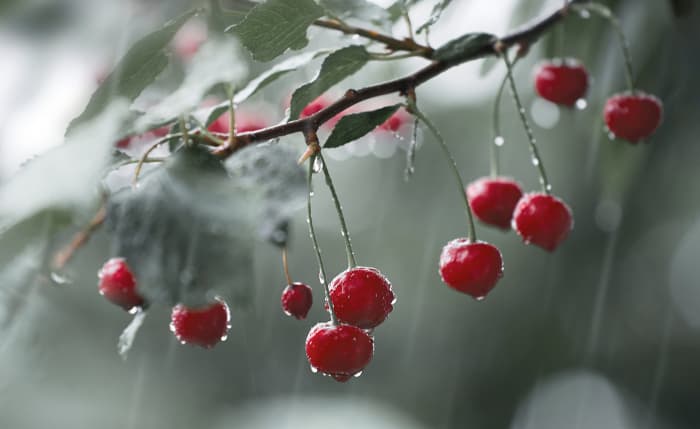 Top 8: 10 Common Cherry Tree Diseases - Minneopa OrchardsAutora: minnetonkaorchards.com - 102 Avaliação
Descrição: 10. Cherry X-Disease (Cherry Buckskin Disease). Final Word On Cherry Tree. Diseases Cherry trees are lovely, low-maintenance fruit trees that you can easily grow and harvest in a home garden. Whether you are growing sweet cherries to eat right off the tree or cultivating sour cherry trees for preser
Resultados de pesquisa correspondentes: Web3. Cherry Leaf Spot. Cherry leaf spot is a fungal disease that first presents with purple spots on older cherry tree leaves. This disease is caused by the fungus Blumeriella jaapii and is particularly partial to sour cherries like the Morello tree.If left untreated, it can spread quickly and negatively impact fruit production. ...
 Top 9: 7 Common Cherry Tree Diseases and How to Treat ThemAutora: lawnstarter.com - 125 Avaliação
Descrição: When to Call a Professional. Need a professional opinion? Cherry tree enthusiasts look forward to it each spring: a mass explosion of light pink blossoms. What’s not so exciting for lovers of the blossoms and their sweet fruit is the threat. of cherry tree diseases. If you’ve noticed signs of diseas
Resultados de pesquisa correspondentes: WebAug 17, 2022 · Thinning your fruit trees encourages airflow, allowing for a drier environment to deter the fungus. If brown rot is unmanageable and continues to infect your trees, consider using fungicides. Season: Brown rot often attacks cherry trees when in bloom. Risk: Cherry tree owners risk losing their fruit harvest to this disease. 3. Cherry Leaf Spot ...
 Top 10: Home & Garden Information Center | Clemson Cooperative …Autora: hgic.clemson.edu - 83 Avaliação
Descrição: My, What. Beautiful Bracts You Have. Managing Your Diabetes During the Holidays. How to Take a Soil. Sample. How to Set and Calibrate Your Irrigation System In the Garden Photo Blog Tasty Bites . Recipes My, What. Beautiful Bracts You HavePlants are often prized for their flowers, but that isn’
Resultados de pesquisa correspondentes: WebThe Home & Garden Information Center (HGIC) provides research-based information on landscaping, gardening, plant health, household pests, food safety & preservation, and nutrition, physical activity & health. ...
Top 11: How To Control Brown Rot On A Cherry Tree - Gardening Know HowAutora: gardeningknowhow.com - 144 Avaliação
Descrição: Cherry Brown Rot Symptoms. Treating Cherry Brown Rot Do you have sweet cherries that develop mold or canker? They probably have cherry brown rot. Unfortunately, warm, wet weather conditions that are a necessity to cherry trees bring with it a higher incidence of fungal disease such as this.. The dis
Resultados de pesquisa correspondentes: 20 Jan 2022 · Brown rot on cherry trees is caused by the fungus Monilinia fructicola, which spreads rapidly during ripening and in storage post-harvest.20 Jan 2022 · Brown rot on cherry trees is caused by the fungus Monilinia fructicola, which spreads rapidly during ripening and in storage post-harvest. ...
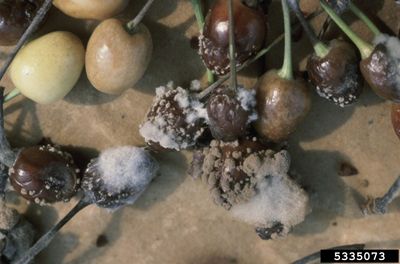 Top 12: Cherry Brown Rot Treatment - Learn About Brown Rot In Cherry TreesAutora: gardeningknowhow.com - 149 Avaliação
Descrição: Cherries With Brown Rot: Controlling Cherry Brown Rot Symptoms. Symptoms of Cherries with Brown Rot. Controlling Cherry Brown Rot Treatment Cherries With Brown Rot: Controlling Cherry Brown Rot SymptomsBy: , Credentialed Garden Writer Brown rot in cherry trees is a serious fungal disease that infe
Resultados de pesquisa correspondentes: 28 June 2021 · Brown rot in cherry trees is a serious fungal disease that infects stems, blossoms and fruit. It may also infect ornamental cherry trees.28 June 2021 · Brown rot in cherry trees is a serious fungal disease that infects stems, blossoms and fruit. It may also infect ornamental cherry trees. ...
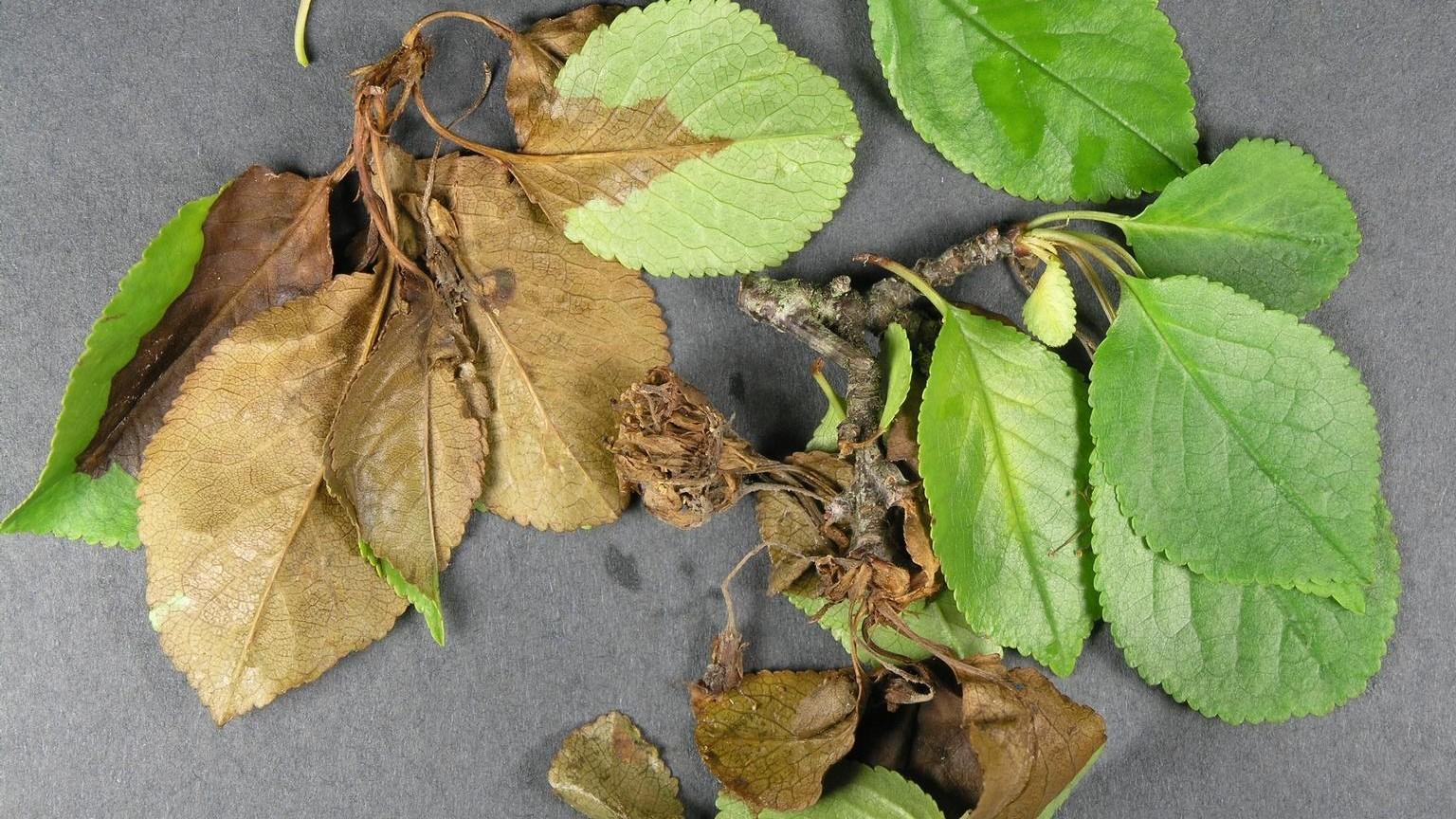 Top 13: Brown Rot on Ornamental Cherry TreesAutora: extension.umd.edu - 104 Avaliação
Descrição: Brown rot symptoms. Photo: Bruce Watt, University of Maine, Bugwood.orgKey pointsBrown rot is a fungal infection that attacks flowering cherry trees, especially the cultivar. 'Kwansan' later in spring just as the flowers are starting to fade. This relatively new disease is really
Resultados de pesquisa correspondentes: 9 Mar 2021 · Brown rot is a fungal infection that attacks flowering cherry trees, especially the cultivar 'Kwansan' later in spring just as the flowers are ...9 Mar 2021 · Brown rot is a fungal infection that attacks flowering cherry trees, especially the cultivar 'Kwansan' later in spring just as the flowers are ... ...
Top 14: Cherry (Prunus spp.)-Brown Rot Blossom Blight and Fruit RotAutora: pnwhandbooks.org - 162 Avaliação
Descrição: Cause The fungi Monilinia fructicola and M. laxa can incite a blossom blight, a twig and branch dieback, and a fruit rot of several Prunus spp. including many ornamental and fruit trees. Fungi survive year to year on infected twigs, branches, old flower parts, or mummified fruit. Conidia are produce
Resultados de pesquisa correspondentes: Cause The fungi Monilinia ; fructicola and M. ; laxa can incite a blossom blight, a twig and branch dieback, and a fruit rot of several Prunus ; M. · laxa ...Cause The fungi Monilinia ; fructicola and M. ; laxa can incite a blossom blight, a twig and branch dieback, and a fruit rot of several Prunus ; M. · laxa ... ...
 Top 15: Brown rot of stone fruit | UMN ExtensionAutora: extension.umn.edu - 102 Avaliação
Descrição: How to identify brown. rot. How does brown rot survive and spread?. How to manage brown rot. Twig and branch symptoms. Keep your orchard clean. Prune out diseased wood. Fungicides for brown rot Home Yard and garden Solve a problem Plant diseases Brown rot of stone fruit Quick. factsBrown rot
Resultados de pesquisa correspondentes: Quick facts · Brown rot is the most serious disease in plums, tart cherries and apricots in Minnesota. · This disease damages shoots, twigs and fruit. · During ...Quick facts · Brown rot is the most serious disease in plums, tart cherries and apricots in Minnesota. · This disease damages shoots, twigs and fruit. · During ... ...
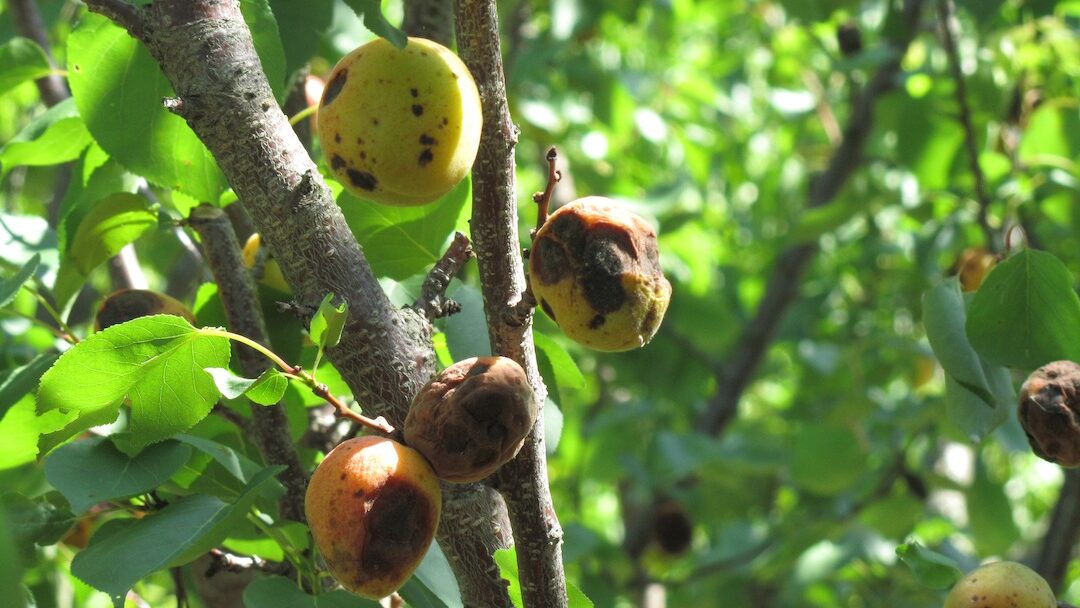 Top 16: What to Do About Brown Rot - Stark Bro'sAutora: starkbros.com - 107 Avaliação
Descrição: What does brown rot look like? What are the visible signs?. Which fruit trees are affected by brown rot?. What can be done to prevent brown rot?. What can be done to treat brown rot in fruit trees? Brown rot is a fungal disease that commonly affects stone-fruit trees like peaches and cherries. Lear
Resultados de pesquisa correspondentes: Brown rot is a fungal disease that commonly affects stone-fruit trees like peaches and cherries. Learn how to control brown rot in your fruit garden.Brown rot is a fungal disease that commonly affects stone-fruit trees like peaches and cherries. Learn how to control brown rot in your fruit garden. ...
Top 17: Brown Rot Fungi: Symptoms, Treatment and Control | Planet NaturalAutora: planetnatural.com - 139 Avaliação
Descrição: Best product for Brown Rot Best product for Brown RotThe most common fungal disease affecting the blossoms and fruit of almonds, apricots, cherries, peaches and plums. Brown rot (Monilinia fructicola) overwinters in mummified fruit (on the tree and on the ground) and infected twigs.The disease fi
Resultados de pesquisa correspondentes: Ready to use copper fungicides or sulfur powders should be applied weekly to infected trees starting when the blossoms are just beginning to open and continuing ...Ready to use copper fungicides or sulfur powders should be applied weekly to infected trees starting when the blossoms are just beginning to open and continuing ... ...
Top 18: Tree Diseases: Brown Rot Blossom Blight (Monilia fruiticola)Autora: blog.irontreeservice.com - 151 Avaliação
Descrição: IntroductionBrown rot blossom blight is a fungal disease that infects a bevy of stone fruit trees. The disease is caused by the pathogen Monilia fruiticola. Monilia fruitocola invades susceptible trees through various plant parts, including blossoms, branches, and shoots. Once the fungus becomes est
Resultados de pesquisa correspondentes: 28 Dec 2017 · Brown rot blossom blight is a fungal disease that infects a bevy of stone fruit trees. The disease is caused by the pathogen Monilia fruiticola.28 Dec 2017 · Brown rot blossom blight is a fungal disease that infects a bevy of stone fruit trees. The disease is caused by the pathogen Monilia fruiticola. ...
|

Postagens relacionadas
Publicidade
ÚLTIMAS NOTÍCIAS
Publicidade
Populer
Publicidade

direito autoral © 2024 cemle Inc.




























